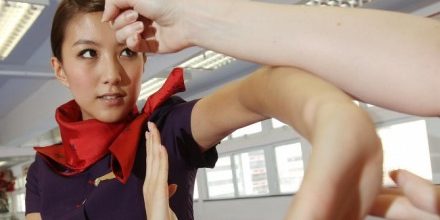People have always been asking whether martial arts are biased towards men. Questions often cover the fact that fighting was historically a male to male necessity of war, and that many of the techniques involved are tailored to the male physique and body structure. In Ancient China, men and women were trained differently in Qigong and Taiji, party to do with social norms of the day but also due to separated techniques that would be play to each person’s physiological strengths.
According to historians, the martial art of Wing Chun was in fact developed by a Shaolin Nun called Ng Mui who taught a young girl called Wing Chun (meaning ‘beautiful spring’) to defend herself against an oppressive and violent landlord. The story goes that the tradition was named after this girl, and it was the first martial art to be developed by a woman, for a woman.

Following a southern Shaolin Style, Wing Chun is well suited to female fighters thanks to fast movements, elaborate techniques, solid stances and for focusing power in the arms. In fact, women usually reach a higher standard than men at a quicker pace when learning Wing Chun.
This is due to a number of quantifiable reasons trainers give, such as the fact that women are able to generate much more force behind their strikes because they have an ability to feel the intention before the strike is made. The lift kick is also in the woman’s favour, as it is a kick that goes straight up towards the groin…hitting something that they do not have, meaning any retaliation would be pointless. Women also excell at elbow strikes as it’s very hard to make an elbow soft.

What grandmasters of Wing Chun suggest is that women do not lack strength when compared to men, but they do use their strength different. The arm wrestle analogy explains it well. “If a man were to ‘arm wrestle’ a lady he would find that she can be very strong at holding her ground, but not as likely to be able to exert more power to beat him.”
A commentator on a martial arts forum however, suggests Wing Chun is designed to help women overcome attackers by way of relentless attacks, because blow for blow women may not be able to compete with a man’s upper body strength. “In Wing Chun they knew that a woman could not compete with any man blow for blow. Hence the system continually puts pressure on its opponent once contact is made…in Wing Chun you continue to throw combinations of blows, relentlessly (many instances blocking and punching simultaneously). It makes up in quantity what women lack in strength.”
Biologically, women usually need to train slightly different too. Women usually have a greater core strength, but weaker upper body strength when compared to men, and when training in martial arts, kicks should also be adapted to take the shape of a woman’s pelvis into acoount, something that affects the angel of articulation of the hip.
If we were to ask Ronda Rousey whether women should be trained differently to men, we may not get a straight answer. When professional fighters hit professional levels, they are for all intents and purposes the same as men in almost every way, but when it comes to simple self-defense, there are clearly techniques developed that help utilise the female physique. What is curious however, is that most ‘female based techniques’ in martial arts seem aimed towards attacking men, rather than other women.






